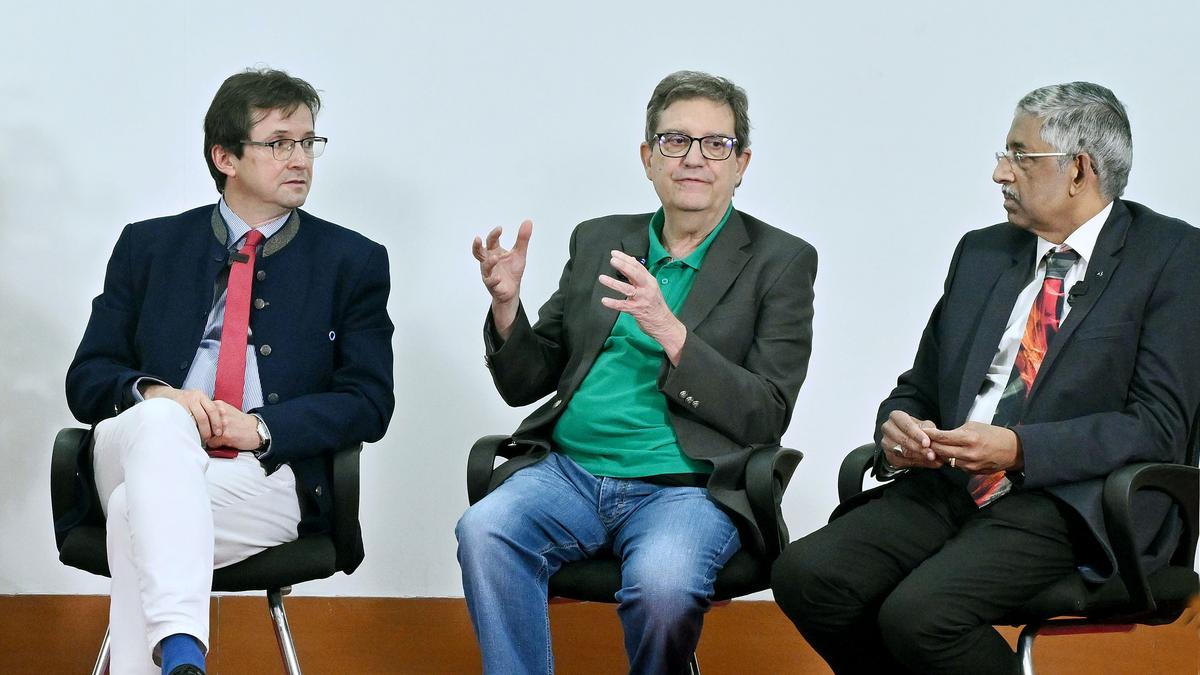
The International Diabetes Federation (IDF) is drawing up new guidelines for the treatment of Type 2 diabetes in consultation with a global expert panel. These guidelines are being evaluated, and will be launched in Bangkok in April during the World Congress, said IDF president, Peter Schwarz. Prof.
Schwarz was in Chennai along with the chairperson of the guidelines committee, Antonio Ceriello, (former head of the European Association for the Study of Diabetes - EASD) to give Indian diabetologists a sneak peek into the new set of guidelines. Speaking to The Hindu , Prof. Schwarz said: “Forming such a guideline is always a big undertaking, because we need to put all the evidence -- from science and clinical practice -- together.
What is unique about the International Diabetes Federation’s guidelines is that it does not lose the science, but makes sure that the practice is applied on to the environment in specific countries. We are talking about putting not the drugs, but the patient in the middle of the care model.” Prof.
Chereillo added: “In many countries in the world, these guidelines are used by healthcare systems to justify some choices in terms of reimbursement or in terms of what can be allowed, how to access care. This is why we we wanted to set the minimum, basic care, that reflects the basic right of anyone with diabetes for treatment; less than this is not acceptable.” While there are multiple guidelines for diabetes in the world, he said most focus on the best available chances because they are coming from the United States or Europe.
“But our idea is to give instruments to be used at [a] local level in order to get the best options for the treatment of diabetes.” The current, or existing guidelines from the American Diabetes Association (ADA) or EASD may not be suitable for all countries, because of accessibility and affordability issues, explained V. Mohan, chairman, Dr.
Mohan’s Diabetes Specialties Centre, Chennai. The IDF, which is an organisation comprising over 240 associations of diabetologists across the world, looks at it from a slightly different perspective than national associations for diabetology. For instance, the ADA’s recommendation that GLP-1 receptor agonists, including semaglutide , may be used as first-line treatment in certain cases “is questionable, for several reasons” said Prof.
Ceriello. “I can say that they are good drugs. But there are several problems.
Firstly, the shortage of the drugs. In Australia, for example, people were forced to stop because the drug was not anymore available. When these drugs which aid weight loss are stopped, the patients regain weight.
So, as part of the guidelines we do not say GLP-1 first, then insulin. We keep insulin as our first choice, and if needed and suitable, you can add GLP-1.” Prof.
Schwarz chimed in: “I’m a strong supporter of calming down to look at the science and the impact. We would move the patient from a lifelong treatment with insulin, which is becoming cheaper and cheaper, to a lifelong treatment with an expensive drug. This has social and financial dimensions and there are side effects – all of which we have to consider.
” Dr. Mohan added that there is currently no long-term data on the side effects of the GLP-1 class of drugs, so it may not be advisable to use them as the first-line for everyone at this stage. Global diabetes index Prof.
Schwarz added that the IDF is also developing a global diabetes index. “Once a year we will ask 100,000 physician and 100,000 patients in every country in the world about their perception of the quality of diabetes care, and it will be translated into a score of up to 100. Then, immediately, we can compare the quality of diabetes care in Kerala with Wisconsin in the United States.
Countries can learn best practices from each other. For instance, he said, the chain of institutions Dr. Mohan runs would be a role model on how to conduct diabetes care in different areas with varying income groups.
Published - November 09, 2024 05:35 pm IST Copy link Email Facebook Twitter Telegram LinkedIn WhatsApp Reddit diabetes / non-communicable diseases.










